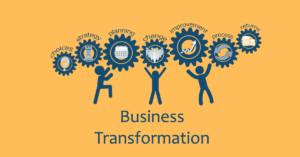Maximising Success: How to Create a Thriving Business with a Gamification Platform

Are you tired of traditional business strategies that just aren’t cutting it in today’s fast-paced digital world? Look no further! In this blog post, we will explore the power of gamification and how implementing a gamification platform can take your business to new heights of success. Get ready to revolutionise your approach and watch your business thrive like never before!
Introduction
In today’s fast-paced and competitive business world, companies are constantly looking for innovative ways to engage their employees, increase productivity, and drive success. One such method that has gained immense popularity in recent years is the use of gamification platforms.
Gamification is the process of integrating game mechanics, such as points, levels, challenges, and rewards into non-game environments, like businesses. This approach leverages human psychology and motivation to create a fun and engaging experience that can lead to improved performance and results.
The concept of gamification may seem new to some businesses, but it has been around since the early 2000s when tech giants like Google started using it in their products. Since then, numerous studies have shown its effectiveness in driving employee engagement and achieving business goals.
In this article, we will explore how you can maximise success by implementing a gamification platform in your business. We will discuss the benefits of gamification for businesses of all sizes and industries and provide practical tips on how to create a thriving business with this approach.
Benefits of Gamification for Businesses:
1. Increased Employee Engagement: Studies have shown that engaged employees are more productive and loyal to their employers. By incorporating game elements into daily tasks or training programs, employees are motivated to perform better as they strive to achieve rewards or recognition.
2. Improved Learning: Gamified learning has proven to be highly effective in retaining information compared to traditional methods. The interactive nature of gaming allows individuals to learn at their own pace while still being challenged.
3. Enhanced Team Collaboration: Gamification encourages healthy competition among team members while also fostering collaboration towards common goals. It can break down communication barriers between different departments or teams within an organisation.
4. Boosted Sales Performance: Sales teams often face high-pressure situations where targets must be met consistently. Using a gamified approach can motivate sales representatives by creating friendly competition with leaderboards, badges, or prizes for top performers.
5. Customer Engagement: Gamification can also be used to engage and retain customers. By incorporating game mechanics into loyalty programs or marketing campaigns, businesses can increase customer engagement and drive repeat purchases.
Gamification is a powerful tool that can bring numerous benefits to businesses, from increased employee engagement to improved sales performance and customer loyalty. In the following sections, we will discuss how you can implement a successful gamification platform in your business.
What is a Gamification Platform?
A gamification platform is a tool that uses game design elements and principles to engage, motivate, and drive desired behaviours in users. It is essentially a software solution that enables businesses to incorporate gaming techniques into their products or services.
The concept of gamification has been around for decades, but it has gained significant traction in recent years as more and more companies are realising its potential to boost customer engagement and loyalty. By leveraging the power of play, businesses can create an immersive experience for their customers, employees, or partners that keeps them coming back for more.
At its core, a gamification platform operates on the principle of rewards and recognition. Users are given tasks or challenges to complete within the system, which they can then earn points or virtual currency for. These rewards act as incentives for users to continue engaging with the platform and achieving their goals.
Additionally, gamification platforms often include leaderboards where users can see how they rank compared to others. This element of competition adds an extra layer of motivation as individuals strive to climb up the ranks and achieve higher status within the community.
One key feature of a gamification platform is its ability to track user data and behaviour. With this information, businesses can gain insights into what motivates their customers or employees and tailor their strategies accordingly. For example, if certain challenges or rewards seem particularly effective at driving engagement, businesses can replicate these tactics in other areas.
Furthermore, a well-designed gamification platform takes advantage of social elements such as collaboration and sharing. Users can connect with each other through social networks within the platform itself or share their progress on external social media channels. This not only fosters a sense of community but also helps spread awareness about the business’s products or services.
Another aspect that sets apart a successful gamification platform is its seamless integration into existing systems and processes. This means that users should be able to access it easily from any device without disrupting their workflow. It should also align with the business’s overall goals, whether it is to increase sales, improve customer satisfaction, or boost employee productivity.
A gamification platform is a powerful tool that can help businesses achieve their objectives by tapping into the motivational drivers of human behaviour. By incorporating game-like elements and mechanics into their processes, businesses can create an engaging and rewarding experience for their customers or employees. As such, it has become an essential aspect of modern-day business strategy and will only continue to grow in importance in the years to come.
The Benefits of Implementing a Gamification Platform in Your Business
Gamification, the use of game design elements in non-game contexts, has become a popular strategy for businesses looking to engage and motivate their employees and customers. In recent years, many companies have started implementing gamification platforms in their operations, and the results have been nothing short of impressive.
So what exactly are the benefits of using a gamification platform in your business? Let’s take a closer look.
1. Increased Employee Engagement
One of the main benefits of implementing a gamification platform is its ability to increase employee engagement. By incorporating game-like elements such as points, levels, and rewards into daily tasks and processes, employees are more likely to feel motivated and energised about their work. This can lead to increased productivity, improved performance, and ultimately higher job satisfaction for employees.
2. Improved Learning and Development
Gamification platforms also offer a fun and interactive way for employees to learn new skills or improve existing ones. By breaking down complex concepts into bite-sized challenges or activities within the platform, employees are more likely to retain information and apply it in their work. This not only leads to personal growth but also contributes to the overall success of the business.
3. Encourages Healthy Competition
A little healthy competition can go a long way in driving motivation among employees. Gamification platforms often include leaderboards that showcase top-performing individuals or teams based on points or other metrics. This can create a sense of friendly competition among employees, encouraging them to push themselves further and strive for excellence.
4. Boosts Team Collaboration
In addition to individual competition, gamification platforms can also foster teamwork by including collaborative challenges or activities that require cooperation between team members. This not only promotes better communication but also strengthens relationships within teams leading to more efficient workflows.
5 . Increased Customer Loyalty
Gamification is not just limited to internal operations; it can also be used as an effective tool for customer engagement and loyalty. By creating a gamified experience for customers, businesses can encourage repeat purchases and build brand loyalty. This can be achieved through reward systems, personalised challenges, or exclusive offers for top-performing customers.
Implementing a gamification platform in your business can lead to numerous benefits such as increased employee engagement and motivation, improved learning and development, healthy competition, better team collaboration, and increased customer loyalty. These factors all contribute to creating a thriving business with happy employees and satisfied customers. So why not consider incorporating gamification into your business strategy today? The potential rewards are certainly worth the investment.
Understanding the Psychology Behind Gamification and How It Can Drive Success
Gamification has become a buzzword in the business world, with more and more companies turning to this strategy to drive success. But what exactly is gamification, and how does it work? In this section, we will delve into the psychology behind gamification and how it can be used to boost business growth.
At its core, gamification is the application of game principles and mechanics in non-game contexts. It takes advantage of our innate desire for competition, achievement, and rewards to engage users and motivate them to take specific actions. By incorporating elements such as points, levels, challenges, badges, leaderboards, and rewards into everyday tasks or processes, businesses can make them more enjoyable and engaging for their employees or customers.
But why do these game-like elements have such a powerful impact on our behaviour? The answer lies in human psychology. Our brains are wired to seek out pleasure and avoid pain – a concept known as the pleasure principle. When we engage in activities that give us pleasure or satisfaction (such as playing games), our brain releases dopamine – a neurotransmitter associated with motivation and reward. This release of dopamine reinforces our behaviour and makes us want to repeat it.
Moreover, games also tap into our intrinsic motivation – the inner drive that pushes us towards achieving personal goals without external incentives. By providing clear goals and feedback on progress through game mechanics like levels or points, gamified systems activate this intrinsic motivation within individuals.
Another psychological aspect that contributes to the effectiveness of gamification is social influence. People are inherently social creatures who seek acceptance from others. Through leaderboards or team challenges in a gamified system, individuals can compare their progress with others’ performance while fostering healthy competition among colleagues or customers.
Furthermore, by incorporating rewards like virtual badges or tangible prizes into gamified tasks or processes, businesses can create an external motivation for individuals to participate actively. These extrinsic motivators serve as short-term reinforcements that encourage people to continue engaging with the gamified system.
By understanding these psychological principles and incorporating them into a well-designed gamification platform, businesses can tap into their employees’ or customers’ intrinsic motivations and drive long-term engagement. This increased engagement can lead to improved productivity, customer loyalty, and ultimately business success.
Final Thoughts
Incorporating a gamification platform into your business strategy can greatly enhance the success and growth of your company. By utilising game mechanics and elements, you can motivate and engage employees, increase productivity and creativity, as well as attract and retain customers.
One key factor to keep in mind when implementing a gamification platform is to ensure it aligns with your overall goals and values as a business. It should not be seen as just a fun addition, but rather a strategic tool that supports the objectives of the company. This will enable you to effectively measure the impact of the gamification platform on your business performance and make necessary adjustments for optimal results.
Another important aspect is to continuously evaluate and improve upon your gamification strategy. As with any tool or technique, it is essential to monitor its effectiveness and make changes accordingly. This could involve gathering feedback from employees or customers, analysing data on engagement levels or tracking progress towards specific goals. By regularly reviewing and refining your approach, you can ensure that your gamification platform remains relevant and effective in driving success for your business.
It is also crucial to foster a positive company culture that embraces the concept of gamification. This includes creating a safe space for experimentation, celebrating achievements, promoting healthy competition among employees (in a supportive manner), and providing opportunities for growth and development through challenges within the game.
Remember that while a gamification platform can bring significant benefits to your business, it is not meant to replace human interaction or traditional learning methods entirely. It should be used as an enhancement rather than a replacement for these aspects of running a successful business.
By understanding how game mechanics can drive motivation and engagement in both employees and customers alike, businesses can harness this power through implementing an effective gamification platform. By aligning it with their goals, continuously evaluating its impact, nurturing a positive culture around it ,and using it as an enhancement tool rather than relying on it solely, companies can maximise their success and create a thriving business. So don’t wait any longer, start exploring the possibilities of gamification for your business today!





